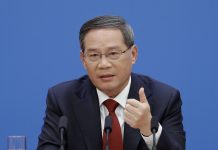BEIJING: If China could achieve annual 5-6 percent economic growth rate in the next 10 years through 2030, it will become the world’s largest economy, renowned economist Justin Lin Yifu said at the China Development Forum 2021 over the weekend.
The projection implies optimism toward China’s economic development, but it is also possible that there will be lots of uncertainties and even challenges facing the world’s second largest economy during the process to grow.
In 2020, China’s GDP scale reached more than 70 percent of the US, and the country is the only major economy to report a positive growth, thanks to the government’s decisive measures to control the coronavirus pandemic. With the narrowing economic gap between the US and China, there has been rising forecasts over when the shift in title of the world’s largest economy will take place, which is supposed to be of great significance to the world’s economic and power structure.
If observed from a different angle, it doesn’t matter when the tipping point of the change will come, because the Chinese economy has grown to a scale large enough to resist US harassment by becoming an indispensable part of the world industrial chain. Some are concerned about the prospect of US-China relations after the Anchorage high-level strategic dialogue, worrying that competition or rivalry between the two countries will only grow fiercer.
In the past weeks, the Biden administration officials carried out intensive consultations with its so-called allies with the purpose to shadow China – indicating that Washington is not ready to give up Trump administration’s anti-China policy. However, as long as China’s giant economy keeps growing at annual 5-6 percent rate, fired up by massive infrastructure and technology investment, surging domestic consumption power and exports, Washington’s gimmick to summon a few allies to isolate this country can hardly impact China’s GDP growth.
– The Daily Mail-Global Times News exchange item





